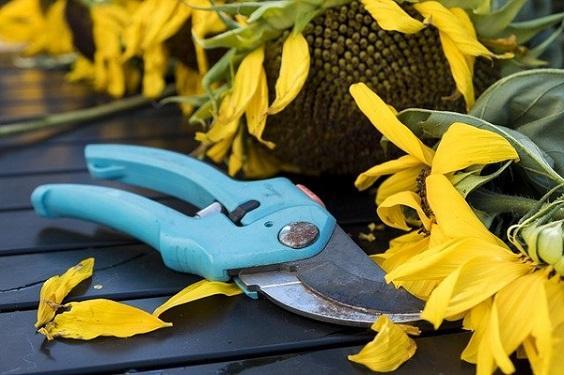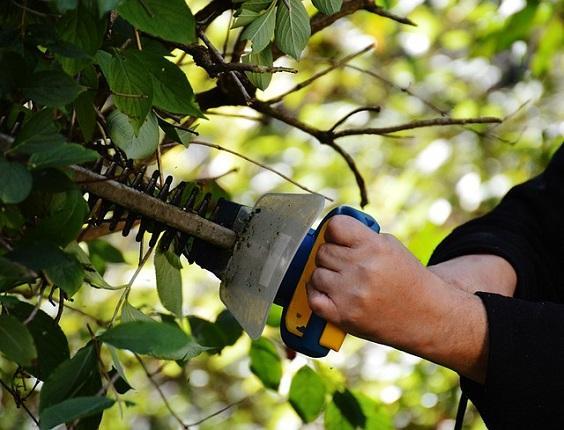When you see that those trees and shrubs in your beloved garden look so messy, you need to prune them immediately as soon as possible. You might find that your exterior area turns into a dark jungle if you don’t get the job done sooner.

For you who are not really familiar with pruning, it can be described as the measured removal of some parts of the trees and shrubs in which the goal is to shape or style them up. At a more advanced level, pruning also works to manage the growth of those plants so they can produce fruits or flowers when the seasons come.
Pruning requires some handy skills. If you are new to it, don’t be afraid to experience trials and errors at the beginning. You will find that this is actually a very relaxing activity once you have mastered it.
Below, we have a simple tutorial on How to Prune Various Garden Plants that you can use as an ultimate reference.
How to Choose the Best Pruning Tools
Before we jump into the steps on how to prune various garden plants, let’s read some tips below that you can consider in choosing some pruning tools. It’s such an important idea to read some points that you can refer to since you will find tons of options in the market.
Here’s what you can consider:
Hand Pruners – To cut small and soft stems or branches, a hand pruner is definitely the best tool that you can use. They are compact enough to carry or store anywhere but sharp enough to ease the job. In general, you will find two types of hand pruners which are bypass and anvil pruners.
- Bypass pruners are the ones with a scissor-like design or come with overlapping blades. It’s considered the best option when it comes to garden pruning.
- Anvil pruners are designed in one blade which presses against an even blade. This type of pruner doesn’t really cut the stems but crushes them instead which leads to attracting pests and disease.
Loppers – You might need to upgrade your pruning tool to loppers once you are dealing with greater branches that can be measured as more than around 1/4 inch in diameter. It’s because the hand pruner will not be able to handle the job since it just might create an uneven cut.
Loppers are designed bigger and sturdier which makes them work well to deal with thick stems, branches, or roots. You will get a precise and clean cut by using loppers instead of hand pruners to get bigger jobs done.
Pruning Saws – As ‘scary’ as it sounds, a pruning saw is a great tool to handle thicker branches and big parts of a shrub that the loppers can’t do. They come with curvy blades and sharp teeth which allow you to get clean cuts out of those heavy pruning jobs. Some of them are also designed in the pole saw style, so you can reach higher branches conveniently when you are not comfortable using ladders.
Hedge Sears – Instead of pruning, hedge sears are made for shaping topiary or evergreen hedges. Their giant-scissors design is good to create broad cuts which make it not really suitable for pruning.
Motorized Hedge Trimmers – If you need to deal with broader areas, motorized hedge trimmers will get the job done more effectively than the traditional hedge sears. They come with reciprocating blades which are sharp enough to deal with broad areas of shrubs and evergreens.
Those are the pruning tools that you can keep in mind, you can choose the one which suits your needs best. One important to note once you have purchased a tool is to always keep them clean all the time. You can simply use rubbing alcohol to sterilize your pruning tools before and after using them. It will not only prolong the life of the tools but also keep the trees away from diseases.
(Read also: How to Choose Essential Oil Diffuser that Really Works For You)
How to Prune Various Garden Plants

How to Prune Shrubs
In pruning shrubs, the most important thing to keep in mind is that you need to keep their natural shape. You can do so by removing individual branches using hand pruners.
- When you spot a bad that faces out, cut it back away from the stem or central trunk. This bud is where the new growth will emerge.
- Leave around a half of an inch on where you make your cut and between the bud.
- You will need to let the water that collects on the wound flow and run towards the bud. So, cut an angle that you find slanting down.
How to Prune Trees
If you have planted evergreen and deciduous trees, you will need to prune them. Removing dead growth, removing a broken branch, and diseased limb are some jobs that need to be done.
Those side branches need to get pruned back to the main branch. It will leave the stub of the branch intact which is important to heal the wound.
For large limbs, which measure more than 1 inch in diameter, you will need a turning saw to prune them in 3-part cut:
- Cut around six to twelve inches underneath the branch for the first one, make it away from the trunk and only 1/3 of the way through.
- About three inches from the first cut, make the second one which will let the branch fail.
- The final cut is to remove all the stubs back to the collar.
How to Prune Hedges
When it comes to the spring or growing season, you need to periodically prune deciduous and evergreen hedges.
- Remove the broken or damaged branches by using a hand pruner for you who have deciduous shrubs.
- You need to keep the size and hedge shape if you have the ones in a formal setting.
Both for deciduous shrubs and formal evergreen, you have to make the bottom part of the hedge wider to let the sunlight shines through the branches.





